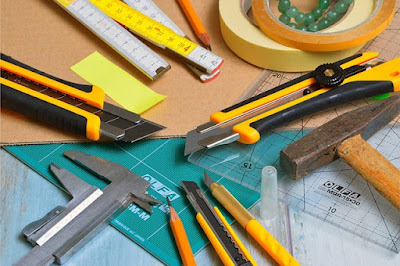The Woodworker's Guide: How to Choose the Perfect Timber
Expert Tips for Selecting the Perfect Wood for Any Project
 | |
|
The choice of wood can make or break a woodworking project. Whether you’re crafting a sturdy dining table or a delicate picture frame, selecting the right type of wood is essential to achieving both the look and durability you desire. With countless options available, it’s easy to feel overwhelmed—but don’t worry! Understanding the characteristics of different woods and how they align with your project goals will ensure you pick the perfect material every time. Let’s explore how to choose the right wood for every project, so you can elevate your woodworking from good to great.
1. Understanding Wood Types: Softwood vs. Hardwood
Choosing between softwood and hardwood is one of the first decisions you’ll make:
Softwoods (e.g., Pine, Cedar): These are easier to work with, making them ideal for beginners and projects that don’t require heavy-duty durability. Softwoods are also more affordable and widely available.
Hardwoods (e.g., Oak, Maple): Known for their strength and durability, hardwoods are perfect for furniture and projects that need to withstand wear and tear. They can be more challenging to work with but offer a more refined finish.
For projects that require specific wood types, check out a collection of free woodworking plans that include material recommendations.
2. Choosing the Right Wood for Outdoor Projects
When working on outdoor projects, wood selection is crucial to withstand the elements:
Cedar: Naturally resistant to rot and insects, making it ideal for outdoor furniture and garden beds.
Teak: Highly durable and weather-resistant, though more expensive. Perfect for high-end outdoor furniture.
Pressure-Treated Wood: Treated to resist moisture and decay, but requires careful handling and finishing.
Need specific outdoor woodworking plans? woodworking plans offer a variety of options suitable for outdoor use.
3. Best Wood for Indoor Furniture Projects
Indoor furniture requires wood that balances aesthetics with durability:
Oak: A popular choice for its strength, durability, and classic appearance. Ideal for tables, chairs, and cabinets.
Maple: Known for its smooth finish and resistance to wear, making it perfect for furniture with a modern look.
Walnut: Offers a rich, dark color and fine grain, making it a top choice for high-end furniture.
For detailed indoor furniture projects, explore furniture plans that include wood recommendations.
4. Understanding Grain Patterns and Their Impact on Your Project
Grain pattern can significantly affect the appearance and structural integrity of your project:
Straight Grain: Offers uniformity and strength, ideal for load-bearing furniture and sleek designs.
Figured Grain (e.g., Quilted, Curly): Adds visual interest to your project, making it stand out. Best used for decorative items or accents.
Knotty Wood: Can add a rustic charm to your project but may require additional finishing work.
Want to see how different grains affect your project? Check out our woodworking plans video for visual guidance.
5. Sustainability in Woodworking: Choosing Eco-Friendly Woods
As sustainability becomes increasingly important, choosing eco-friendly wood options is a great way to reduce your environmental impact:
Bamboo: Technically a grass, bamboo is incredibly strong, fast-growing, and sustainable. Perfect for flooring, furniture, and cutting boards.
Reclaimed Wood: Using wood from old structures not only adds character but also reduces the demand for new lumber.
FSC-Certified Wood: The Forest Stewardship Council certifies wood that is harvested sustainably. Look for this certification when purchasing new wood.
For more sustainable project ideas, download free woodworking plans.
6. Budget Considerations: Finding the Right Balance Between Cost and Quality
Balancing cost and quality is essential, especially if you’re working on a budget:
Pine: Affordable and easy to work with, making it a good choice for beginners or large projects.
Poplar: Slightly more expensive than pine but offers a smoother finish, great for painted projects.
Plywood: A versatile and cost-effective option for many projects, especially when the final appearance isn’t a priority.
Looking to save on your next project? Explore affordable woodworking tools and materials.
7. How to Store and Prepare Wood Before Starting Your Project
Proper storage and preparation of wood can prevent warping, cracking, and other issues:
Acclimation: Allow the wood to acclimate to your workspace’s temperature and humidity before starting your project. This prevents warping.
Proper Storage: Store wood flat and off the ground, in a dry, cool place to maintain its quality.
Surface Preparation: Sand and clean your wood before starting to ensure a smooth finish.
For more tips on wood preparation, check out step-by-step woodworking guides.
Conclusion: The Right Wood, The Right Results
Choosing the right wood is the first step toward a successful woodworking project. By understanding the different types of wood and how they relate to your project goals, you can create pieces that are not only beautiful but also durable and long-lasting. Ready to get started? Dive into your next project with confidence by using our https://plans.diymasters.pro/50-free-woodworking-plans-pdf and let your creativity shine!
Related Articles:
Discover the Art of Woodworking: A Beginner's Guide to Mastering the Craft
Unlock the Secrets of Woodworking: A Beginner’s Guide to Crafting Masterpieces
Time-Saving Tips for Efficient Woodworking
Master the Basics: Essential Woodworking Techniques for Beginners






.jpeg)

.jpeg)
